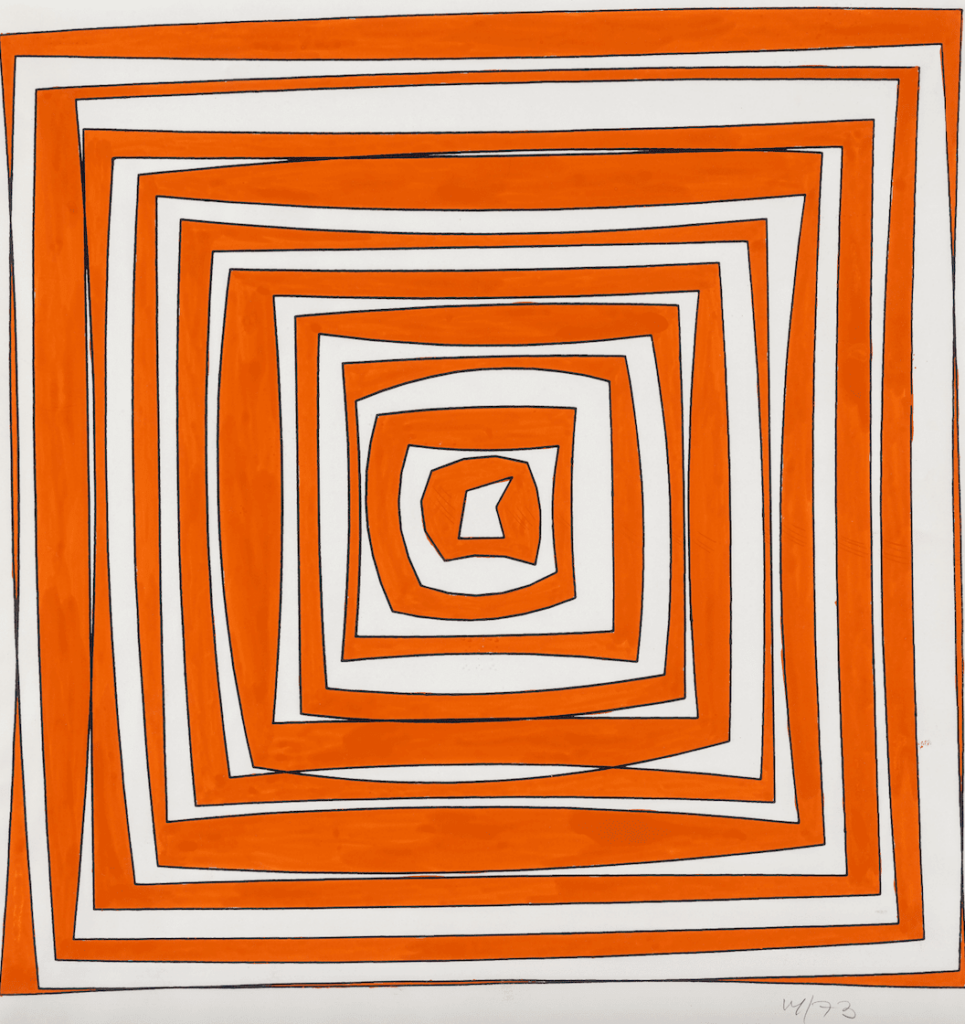Remembering Vera Molnar at Kieselbach Gallery.
This is an old post. Information may be outdated.

Vera Molnar (1924–2023), one of the most renowned representatives of Hungarian contemporary abstract painting, emigrated to Paris.
Similar to artists like Hantai Simon and Reigl Judith, she was deeply immersed in the fascination of squares, often associated with the grand tradition of geometric abstraction in the 20th century. However, just before her centenary birthday last December, Molnar, who had passed away, is now primarily recognized as a pioneer in computer art and generative art.
She was already working with algorithms when computers existed only in her imagination. Although she didn’t exhibit in solo shows until the age of fifty-two, her revolutionary work was acknowledged by world-famous friends such as François Morellet, Max Bill, and Victor Vasarely.
Thanks to her nearly one hundred years of life, she lived to witness her own fame, and yet her true impact is still unfolding: in February, the Pompidou Center in Paris will host a retrospective exhibition of her life’s work. For today’s algorithm-dependent era, she remains a true trailblazer.
The Kieselbach Gallery’s exhibition in honor of Vera Molnar draws from the collection of her devoted collector, Ferenc Offenbächer.